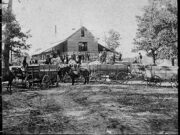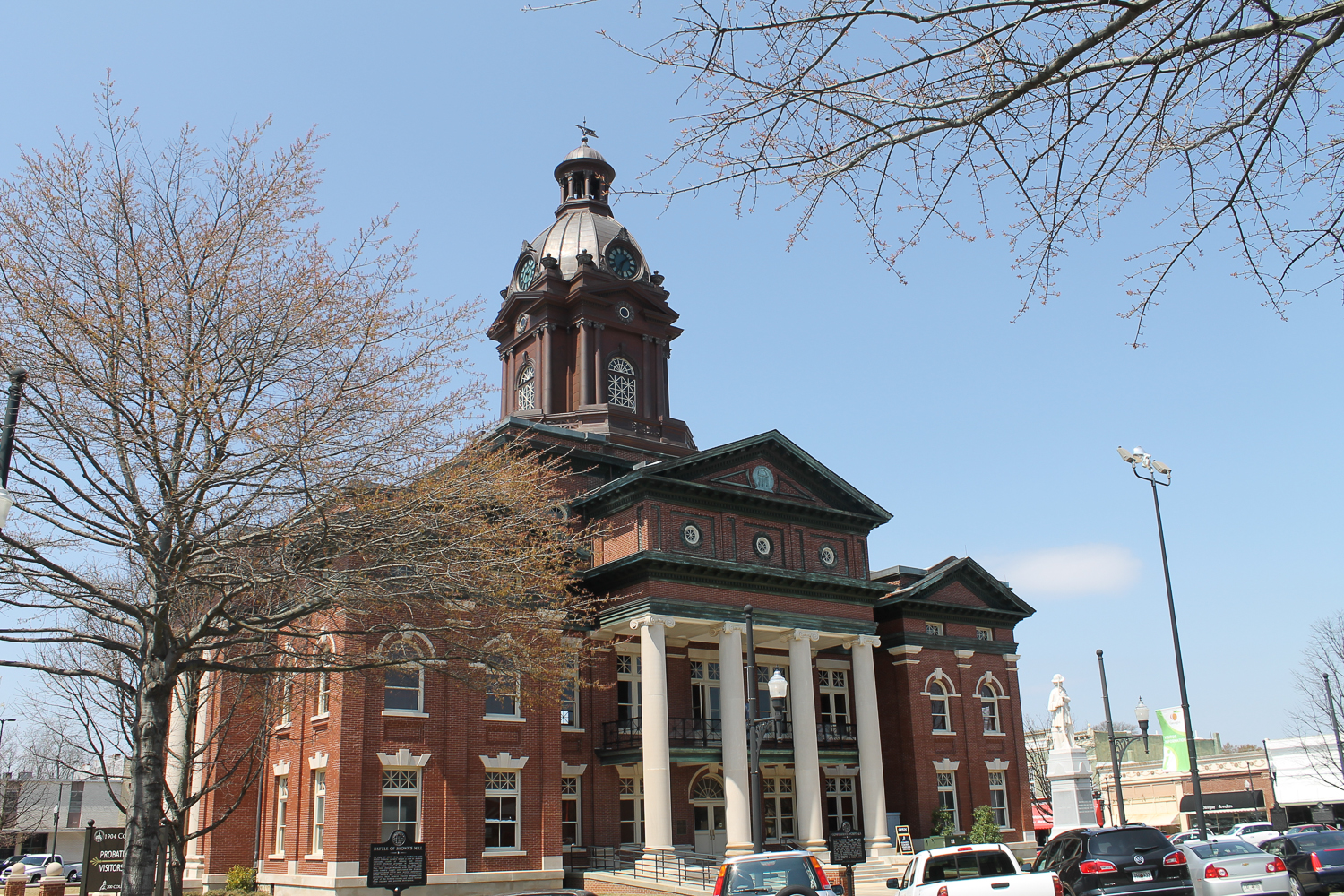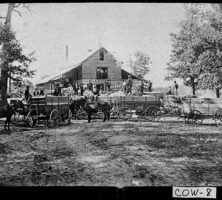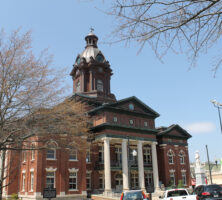Coweta County, Georgia’s sixty-fourth, encompasses 443 square miles in west central Georgia, bordered by Carroll, Fayette, Fulton, Heard, Meriwether, and Troup counties.
It was one of five counties created by the 1825 Treaty of Indian Springs, when Chief William McIntosh relinquished Creek Indian lands to the United States. Coweta was named after McIntosh’s tribe and their town, one of the largest centers for the Creek Nation.
The new county established its seat in the settlement of Bullsboro in 1826, with Walter Colquitt as the first superior-court judge. Because no clearly defined roads led to the settlement, a new site was located roughly two miles west. It was named for General Daniel Newnan, a Revolutionary War (1775-83) hero and Georgia’s secretary of state at the time the county was established. Newnan ultimately became the main economic center for the county, although smaller communities were scattered throughout the region.
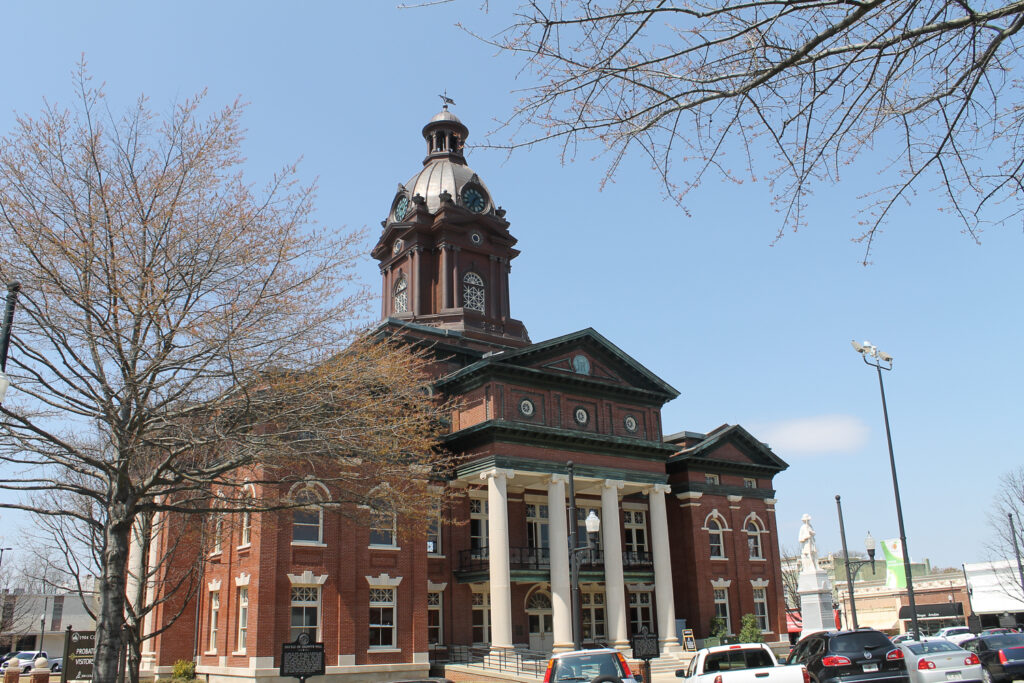
By 1860 the county had grown to almost 15,000 people, evenly divided between whites and Blacks, with plantations and farms the main means of income. The Civil War (1861-65) brought changes to Coweta County. Although the county had some war activity (the Battle of Brown’s Millwas fought outside Newnan in 1864), Newnan became known as “the hospital city of the Confederacy.” Because of its location on the Atlanta and West Point Railroad, and its distance from the heaviest battles, the largest town in Coweta was selected to host a hospital for treating the wounded. Eventually Newnan would have seven hospitals and treat more than 10,000 soldiers from both sides. Many soldiers, including 269 Confederates who died in the town’s hospitals, were buried in nearby Oak Hill Cemetery.
Before the war one in four county white farmers had land and enslaved workers. After the war the southern economy changed. The textile industry found its way to the South and Coweta County. In 1866 the Willcoxon Manufacturing Company was the first cotton plant built in the county. By the early 1900s more cotton factories had opened. Textile mills continued to be built in the county. Together with such manufacturing firms as R. D. Cole, builder of Newnan’s first water tower and manufacturer of war supplies, they made the county quite prosperous.
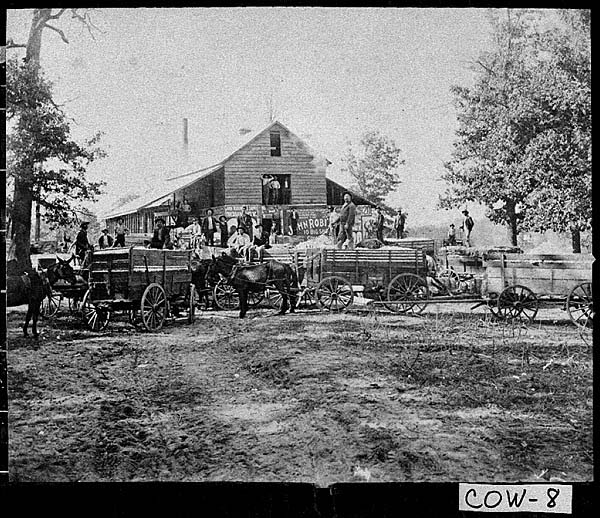
In the twentieth century Newnan became known as “the City of Homes.” Many of the historic homes that line the streets of the town are listed on the National Register. Historic preservation has become an important part of life in Coweta County, and other communities, including Grantville, Moreland, Roscoe, Senoia, and Sharpsburg are involved in efforts to preserve regional heritage.
According to the 2020 U.S. census, Coweta’s population is 146,158, an increase over the 2010 population of 127,317. The Central Educational Center, which opened in 2000, serves as a satellite campus of West Georgia Technical College and as a charter high school.
Some prominent natives of Coweta County include New York classical musician and conductor Charles Wadsworth, Pulitzer Prize–winning journalist Buford Boone, country singers Alan Jackson and Doug Stone, writers Lewis Grizzard and Erskine Caldwell, and former Georgia governors Ellis Arnall and William Y. Atkinson.


